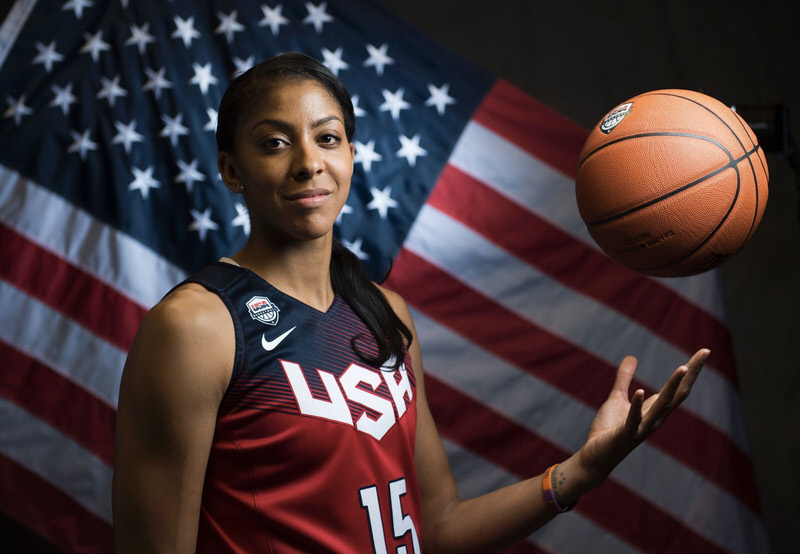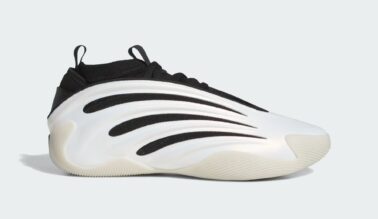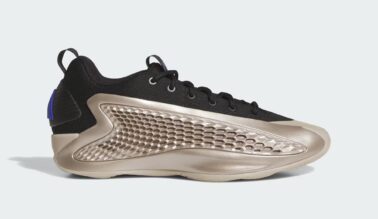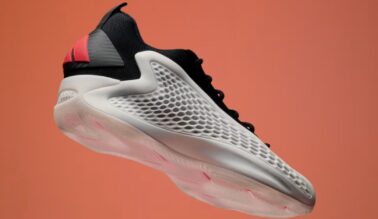This post may contain affiliate links. Please read our disclosure policy.
words // Nick DePaula:
When longtime league executive Jerry Colangelo and esteemed Duke University head coach Mike Krzyzewski jointly took over the reigns of USA Basketball in 2006, the basketball program was in dire need of being reshaped and retooled. The Men’s national team was fresh off of a Bronze Medal finish at the Athens Games in 2004, and both Colangelo and Coach K looked to get buy off from the league’s biggest stars in order to inject a newfound dedication to the program.
Shortly after, the “Redeem Team” was formed, headlined by stars entering their prime, like Kobe Bryant, LeBron James, Dwyane Wade, Carmelo Anthony and several others. The roster fended off a strong push from Spain in the 2008 Olympics’ final game, but otherwise showcased a dominant versatility on both ends of the floor as they reached their collective goal of collecting gold.
On the surface, USA Basketball was back.
The nation’s greatest players were proud to be competing for their country once again, and the team had restored their place atop the now-global sport. Behind the scenes, the resurgence of the roster also coincided with Nike taking over the sponsorship of the team, allowing for the brand to have an enormous presence around the players throughout its training camps and games. The Olympics also became a global platform for Nike to debut new sneakers and showcase its latest innovations.
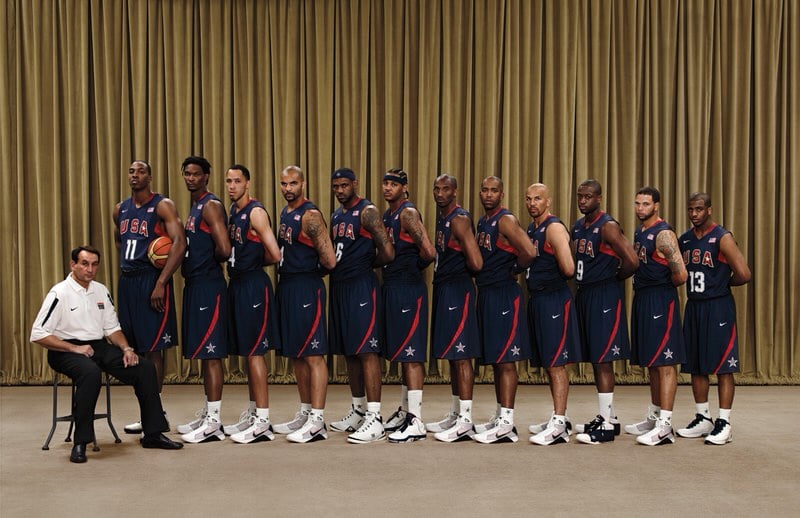
Since NBA players have been allowed to compete in international play, the branding among the team’s rosters has undergone a drastic shift. On the ’92, ’96, 2000 and 2004 rosters, when the national team was first sponsored by Champion and later Reebok, only 70% of the US Men’s players wore Nike.
In the last two Olympics since Nike became the team’s headlining sponsor? 96% of the players have worn sneakers that fall under the Nike Inc. umbrella. That includes Swoosh subsidiaries like Jordan Brand, worn by Carmelo Anthony, and Dwyane Wade’s then-deal with Converse.
The only true non-Nike holdout on the last two national teams was Dwight Howard in 2008, then an adidas signature athlete. He was playing at a dominant level on the defensive end, was a year away from leading the Orlando Magic to the NBA Finals, and simply couldn’t be overlooked for the final roster. In return for being allowed on the roster, Coach K defiantly blocked out his adidas sneakers in the official team photo, as players were also unusually lined up by height in reverse order. It was simply classic, cutthroat business.
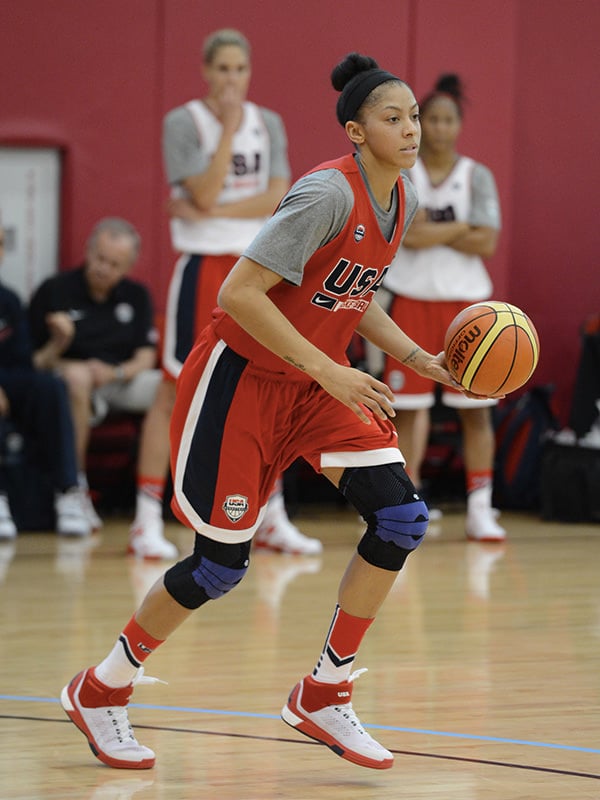 At the 2012 Games, Kevin Love was technically signed to a shoe deal with China-based brand 361, but he cited the “comfort clause” deep in his contract, and wore the Nike Lunar Hyperdunk throughout the team’s summer camp, friendly matchups and exhibition games. Even though 361 was paying him a $2 Million endorsement rate that year, Love still negotiated an extra $250,000 bonus to comply and wear his 361 signature shoe for the final five games of the medal rounds. He still wore Nike off the court and on the podium during the team’s Gold Medal presentation.
At the 2012 Games, Kevin Love was technically signed to a shoe deal with China-based brand 361, but he cited the “comfort clause” deep in his contract, and wore the Nike Lunar Hyperdunk throughout the team’s summer camp, friendly matchups and exhibition games. Even though 361 was paying him a $2 Million endorsement rate that year, Love still negotiated an extra $250,000 bonus to comply and wear his 361 signature shoe for the final five games of the medal rounds. He still wore Nike off the court and on the podium during the team’s Gold Medal presentation.
In less than a decade, USA Basketball’s Men’s national team was back to its dominant ways on the court, and Nike was right there for the prominent exposure, branding and visibility every step of the way. The Swoosh’s team sponsorship had instantly become a great sports marketing case study, and featured sharp executions across uniform designs, product launches and most of all, memorable on-court moments tied to the brand.
Conversely, the USA Women’s national team has never waned in recent years, routinely fielding star-filled rosters and winning five straight Olympic Gold Medals, dating back to 1996. As the final team for the 2016 Olympics was close to being officially announced last Wednesday, word got out early in the week that longtime WNBA star Candace Parker would be left off of the final roster headed to Rio De Janeiro later this summer.
Parker has worn adidas for over a decade, dating back to her time as a phenom at the then-adidas-sponsored University of Tennessee and upon entering the WNBA as the top overall pick in 2008. As executives at rival sneaker brands have long complained about Nike’s access and influence over the US team, Parker’s exclusion marks the first time that some feel the roster slight goes beyond basketball reasons.
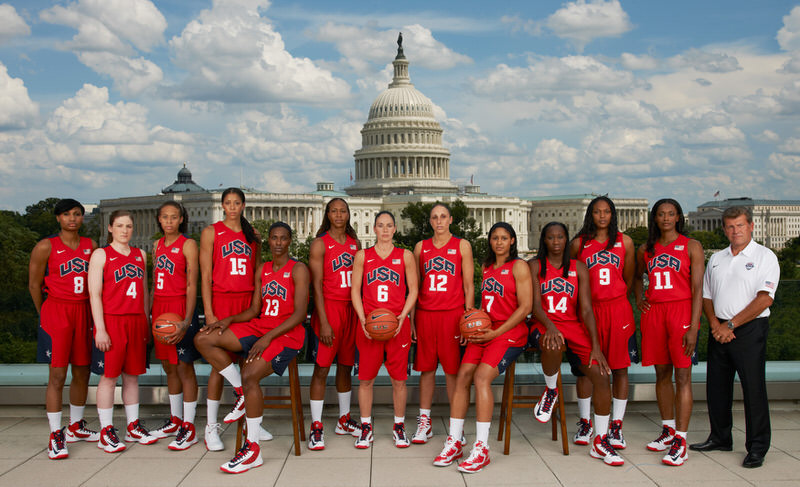
Just after her MVP rookie season in the WNBA, Parker played for the 2008 Olympic team, showcasing her versatility and all-around game that was taking the league by storm. When UCONN head coach Geno Auriemma took over the women’s team coaching duties in 2012 at the London Olympics, Parker curiously wasn’t named a starter. She still led the team in rebounds and blocks, finished third in scoring, and also went on to win WNBA MVP again the very next year.
Now thirty years-old, Parker indeed missed the first half of the most recent WNBA season due to injury, but returned to her old ways once back on the court, averaging 19.4 points, 10.1 rebounds and 6.3 assists while carrying her Los Angeles Sparks to the postseason.
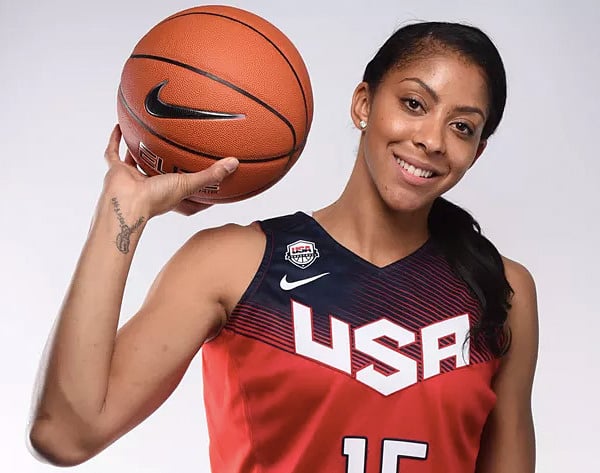 Just last October, Parker also headlined the US team during the four-game string of its European tour, leading the group in minutes played, rebounds, blocks and assists. Sixth months later, she’s no longer a member on the national team.
Just last October, Parker also headlined the US team during the four-game string of its European tour, leading the group in minutes played, rebounds, blocks and assists. Sixth months later, she’s no longer a member on the national team.
“Like her, we were surprised and disappointed to hear the decision that she won’t be representing her country in Rio,” an adidas spokesperson tells Nice Kicks. “There’s no doubt by us or her fans across the globe that she’s one of the best players in the world.”
Officially, according to sources close to Parker, she was given two reasons for not being included on the final roster. Parker was told she was no longer the best player at her position, with that nod presumably going to Elena Delle Donne. She was also told she “didn’t match up well with Australia.” Parker was said to be floored by the reasoning.
“I was surprised and disappointed,” Parker told the AP about her initial reaction.
Others close to Parker have downplayed the brand loyalty in play, calling it “only a small factor,” and feel Coach Auriemma simply wanted to select rookie Brianna Stewart in Parker’s place. Stewart is the WNBA’s latest top overall pick, and fresh off of starring for Auriemma at UCONN, where she led his most recent Huskies dynasty to four straight titles.
As it stands, the two-time MVP in Parker will be surprisingly missing out on a late summer trip to the Olympics with Team USA, though she still has high hopes for the competing roster. “I wish everybody on the team good luck,” she also told the AP. “The USA is going to win a sixth gold medal.”
